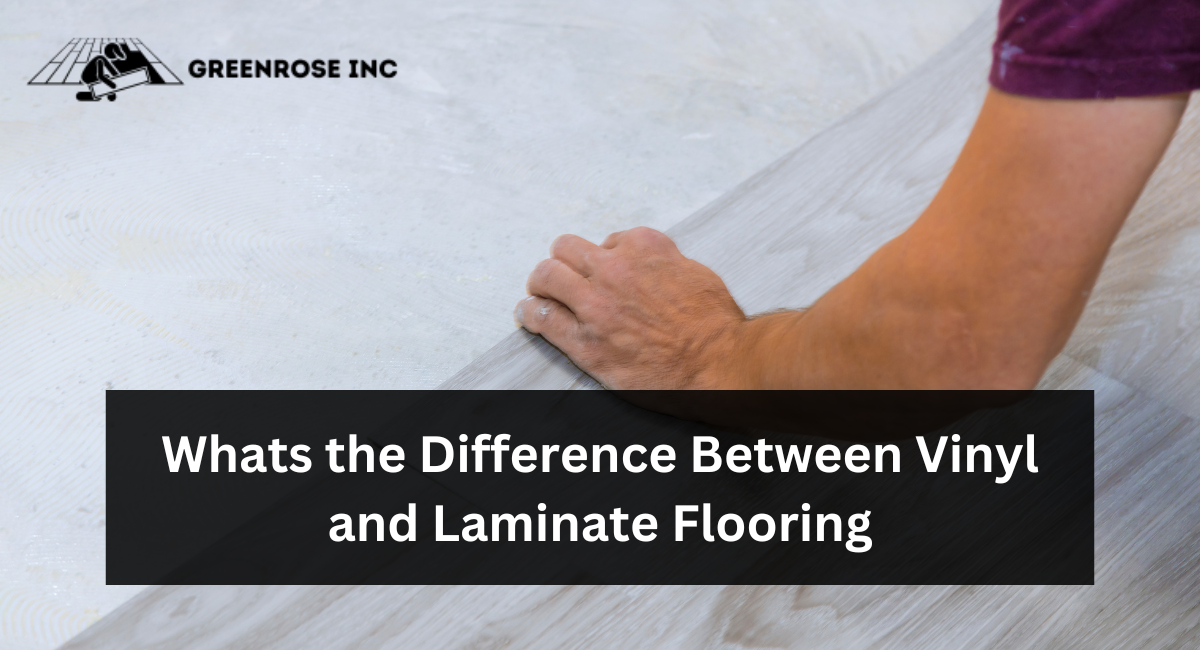Vinyl and laminate floors provide an expansive array of style options. Thanks to advanced printing techniques, both floors can replicate the appearance and texture of stone tiles, hardwood, bamboo flooring, and more.
Vinyl flooring is known to withstand moisture-rich environments like kitchens and bathrooms, which makes it an excellent choice. However, vinyl may be off-gas for some time after installation, which should not cause alarm.
Easy to Install
Modern vinyl options come in various styles and materials to meet every taste and budget. They can be installed as floating floors over most preexisting surfaces, such as concrete or wooden flooring, for quick installation and are suitable for most rooms within a home.
Vinyl flooring is highly resilient against heavy foot traffic, resisting dent and scratch damage, and easily cleaned using a broom, vacuum, dry or wet mop for mopping purposes.
Furthermore, its waterproof nature makes vinyl an excellent choice for high-wear, moisture-prone spaces such as kitchens, bathrooms, and mudrooms.
Vinyl has an unusual feel under bare feet, offering texture depth and realism different from hardwood floors. It can mimic wood grain while duplicating deeper textures like hand-scraping or aged planks.
Laminate flooring provides a softer touch underfoot but may delaminate in high-wear areas with moisture or high foot traffic; for maximum moisture control, a vapor barrier should be placed under the laminate.
Easy to Maintain
Vinyl flooring is highly resilient and resists most staining and damage from spilled food, beverages, and household cleaning products.
Furthermore, its moisture-resistant surface means wet mopping can be done efficiently, while its low cost makes installation much simpler for residential applications.
Keep your vinyl looking its best by regularly sweeping to remove debris that could scratch or stain its surface, using mild cleansers such as apple cider vinegar or hot water as gentle cleaners, and avoiding harsh cleaners that could harm its surface.
In case of staining or scratches on a floor surface, repair it using a vinyl repair kit.
When moving heavy furniture frequently, it’s advisable to equip its legs with plastic glides or double-wheel casters so as not to leave marks or damage in its wake on the floor.
Never drag or push large pieces across vinyl flooring, as doing so could cause dents. You can avoid further scuffing by covering chair and sofa feet with felt covers from home centers or hardware stores.
Easy to Clean
Vinyl may recall cheap sheets used in homes during the 1950s, but modern vinyl flooring technology makes it a stylish and attractive choice for residential and commercial spaces.
Vinyl comes in sheet, tile, and plank formats in styles that mimic stone and wood surfaces.
Vinyl flooring’s waterproof nature makes it the ideal solution for areas that regularly experience exposure to water or liquid spills, including bathrooms, entryways, and basements.
Laminate flooring can also be an ideal option for rooms exposed to occasional moisture; however, its fiberboard core may expand if exposed to standing water for extended periods.
Both types of flooring can be easily maintained through simple daily maintenance routines. Sweeping or vacuuming regularly removes dirt and debris, while damp mopping with mild cleaner can refresh surfaces.
Many manufacturers also offer antimicrobial finishes that protect against bacteria or harmful microbes – this feature is particularly advantageous in households with young children or pets.
Durable
Unlike the sticky sheet flooring we remember from childhood homes or the stick-down tiles used during college, vinyl products available today are far more robust. They can withstand heavy foot traffic while remaining stain, scratch, and dent-resistant.
Vinyl floors are highly resilient, and some manufacturers even add antimicrobial coatings and embed particles of silver into the wear layer, killing any microbes trapped beneath. This makes vinyl an excellent choice for service rooms such as laundry rooms and mudrooms.
However, given that its wear layer is thinner than most flooring materials, laminate remains susceptible to damage from dropped heavy objects or sharp furniture legs. It is less resistant to sun fading than other materials.
Furthermore, laminate is not waterproof and should not be chosen in areas with frequent moisture exposure, although some standout laminate products offer greater moisture-resistant options.
Affordable
Vinyl floors offer homeowners a cost-effective and durable flooring option at an economical price point. Modern vinyl options come in various designs that resemble natural hardwood while being suitable for high foot traffic areas and resistant to moisture damage.
Furthermore, new vinyl products feature a rugged, rigid top layer designed to withstand heavy use and moisture as well as being free from phthalates, low VOC emissions, and formaldehyde emissions as well as UK allergy certification – making it safe for families and pets to live on!
Thickness can significantly impact vinyl floors’ durability, comfort, and performance. Thicker feet are more robust, offer excellent noise insulation, and are better at withstanding heavy furniture legs, sharp heels, and pet claws.
Surface texture also plays a vital role in acoustics and grip underfoot; for best results, it should have cushioned backing rather than hard ones.
Laminate and vinyl floors offer durable, attractive, and budget-friendly floors to meet the needs of modern living. However, their moisture resistance and lifespan vary considerably; to find the appropriate one for your home, determine what matters most to you.
Conclusion:
In conclusion, understanding the differences between vinyl and laminate flooring is essential for choosing your home or business.
While both options offer cost-effective and attractive alternatives to traditional hardwood, they vary in material composition, installation, and moisture resistance.
Whether you prioritize affordability, durability, or aesthetics, carefully considering the distinctions will guide you toward the flooring solution that best suits your needs and style preferences.

